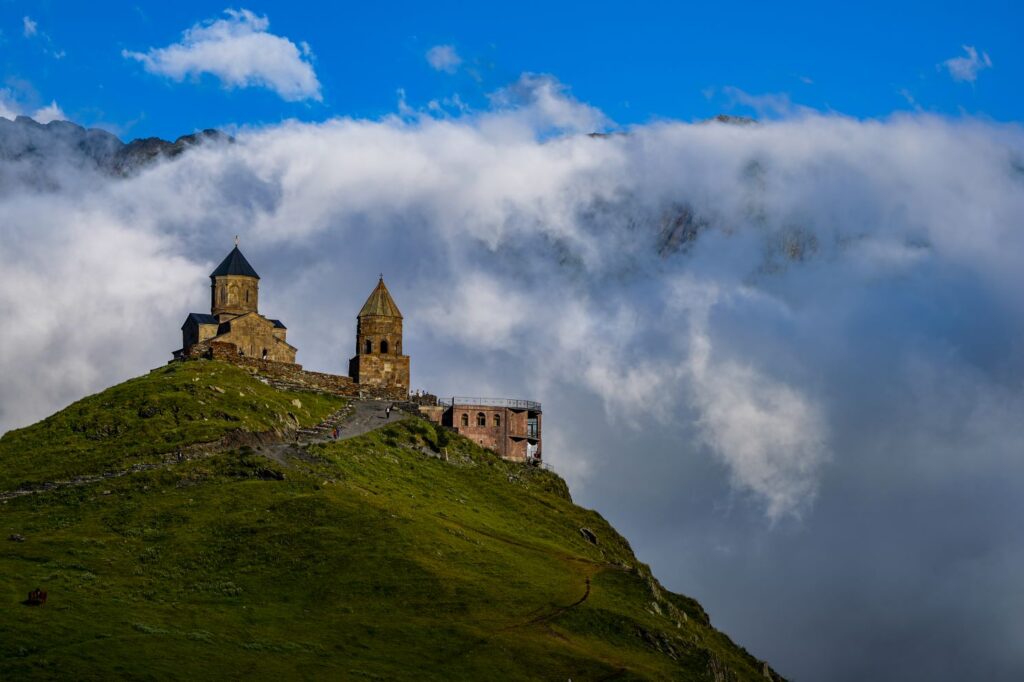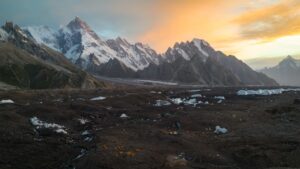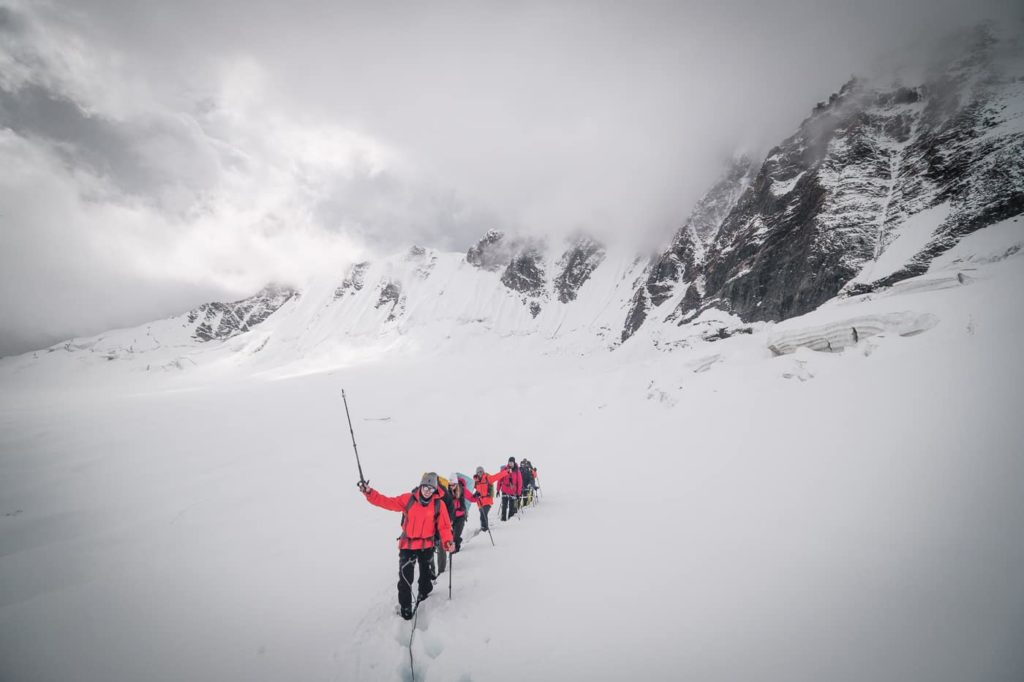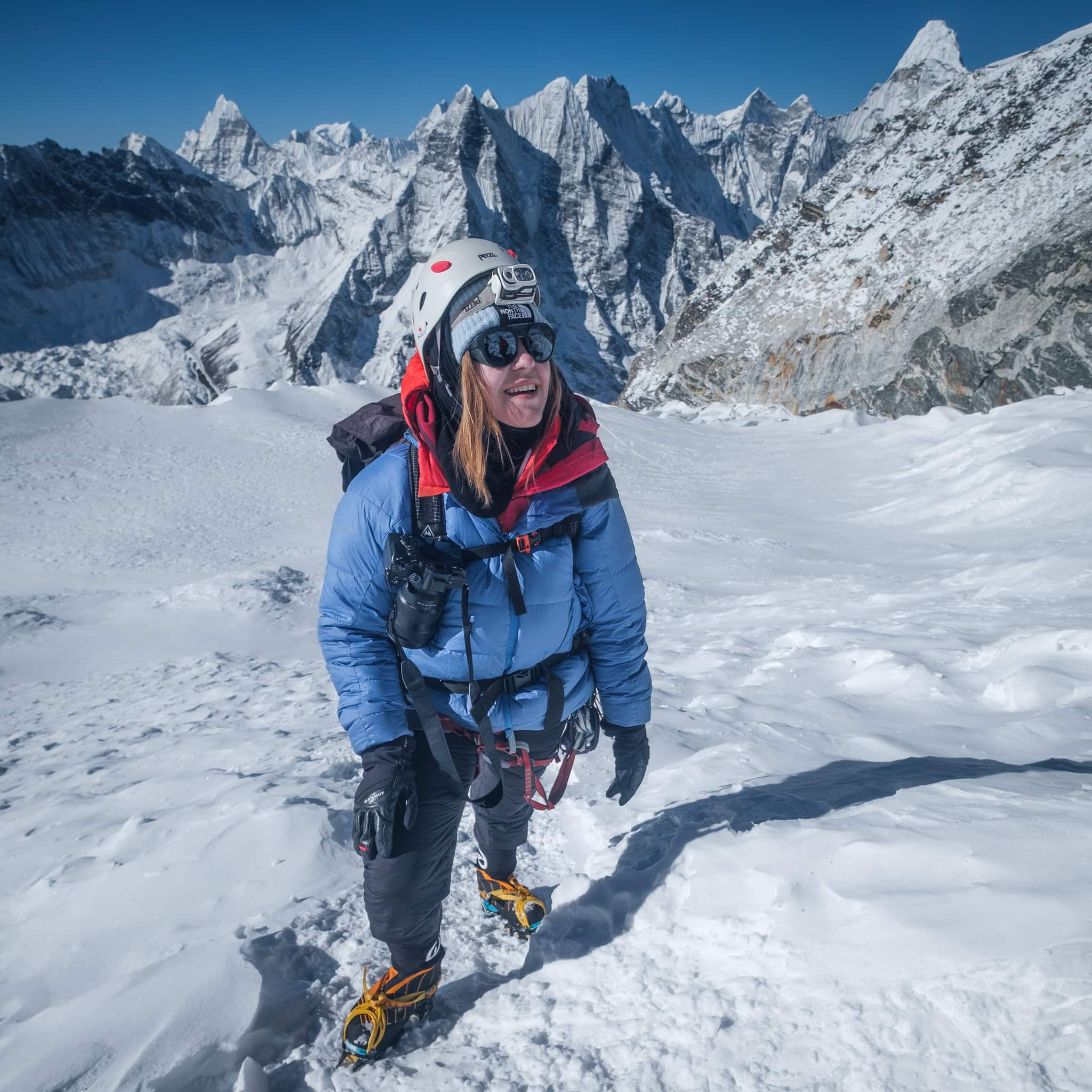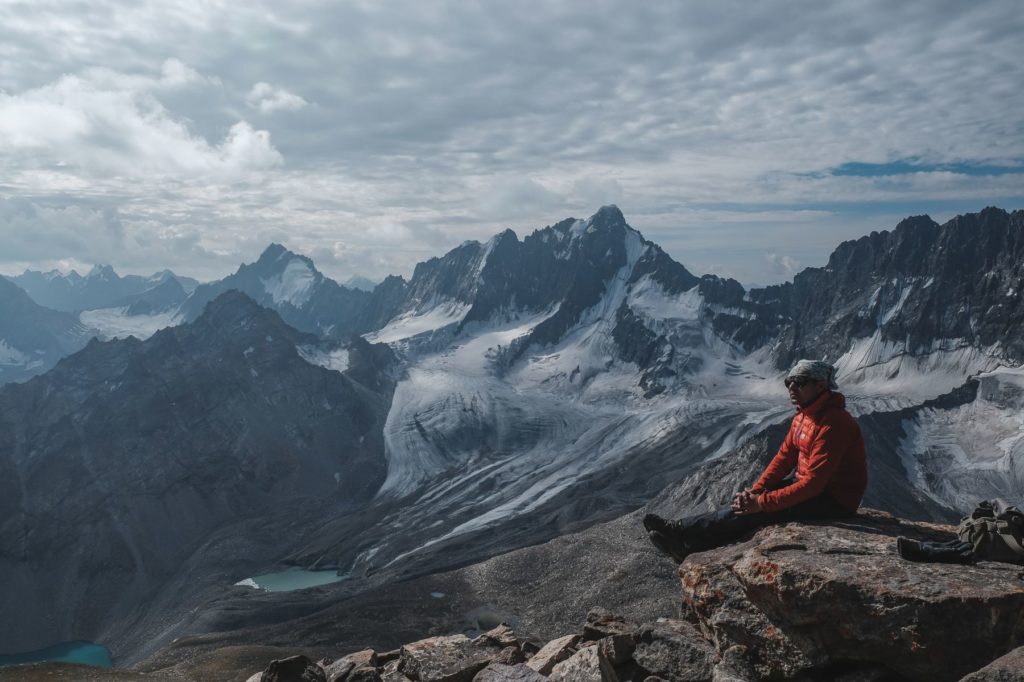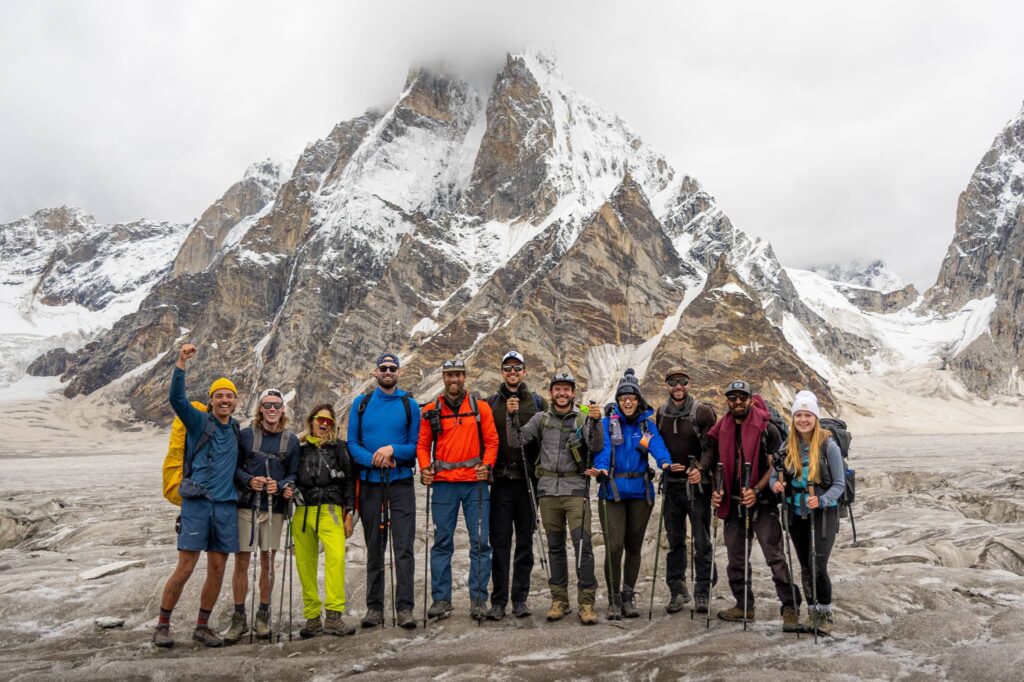Georgia is one of the few places that is great to visit at most times of the year; its climate brings a lot to the table for visitors of all stripes.
Wine harvests in the autumn, skiing in the winter, and, of course, trekking in the Caucuses in the summer; there’s something to do at all times of the year in Georgia!
The climate in Georgia tends to be pretty temperate and has a lot to offer travelers throughout the year, but there are still some seasons that are better to visit than others. It can be a bit of a toss-up deciding when to visit Georgia depending on what you’re looking for.
This article will break down the best time to visit Georgia, how to keep away from the throngs of tourists swarming some parts of the country, and equip you with the knowledge you need to trek through the Caucasus.
Climate in Georgia
Perched on the edge of Europe and Asia, Georgia’s climate is fairly moderate and never gets too extreme in most places you’ll visit. Summer can get hot and Winter is dreary: gray, rainy, and usually just above freezing at the lower altitudes.
Year-round, the weather in Georgia has a lot of range to it: Autumn is blissful with cool temperatures and stunning colors, while Spring brings unpredictable weather that can swing back and forth between clear skies and intense rainstorms in an hour or less, particularly in the month of May.
The northern mountains experience pretty warm temperatures in the summer months during daylight hours and get cool or even cold at night, and winter is naturally freezing at higher altitudes.
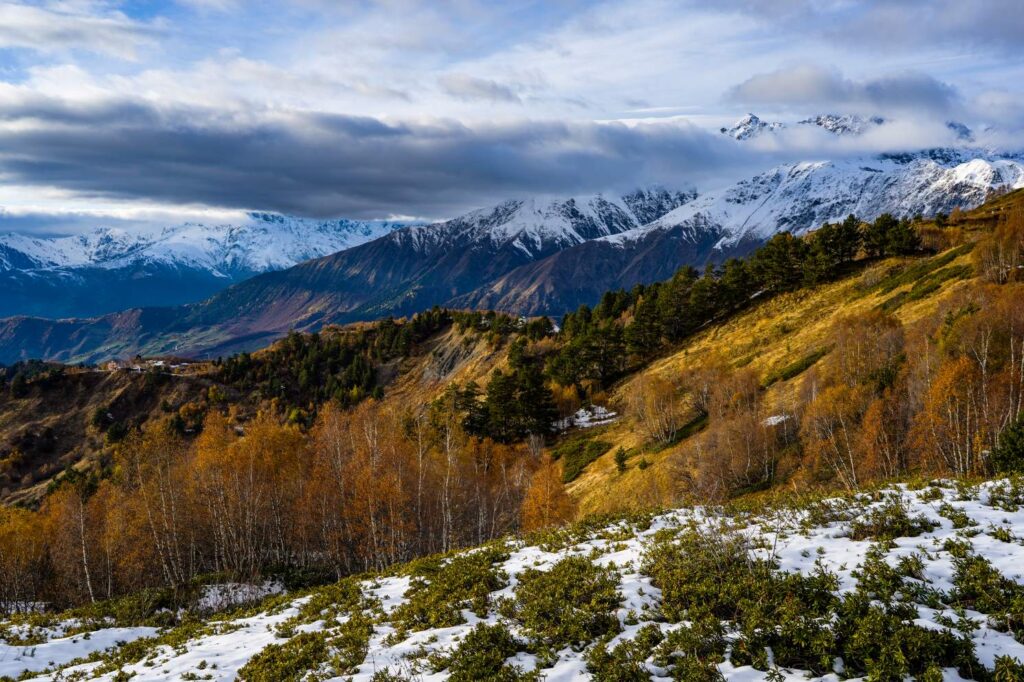
Best Time to Visit Georgia for Weather
Seasonal activities in Georgia are abundant in nearly every season, with wine tasting being a year-round option and Tbilisi’s vibrant expat and nightlife scenes buzzing throughout the year.
The best temperatures in Georgia can be found from June to September. At this time of year, the rain has mostly stopped, the paths are clear, and the roads are open. Hiking is easy and getting around is relatively comfortable and fast. Most of the most popular places to visit in Georgia will be accessible as well.
July and August can get uncomfortably hot – even in the mountains – and tourist crowds can be overwhelming to wade through. Spring is wildly unpredictable with sudden rainstorms and winter can be tough to deal with, so if you plan on trekking during these seasons, you need to prepare accordingly.
If you’re planning on visiting more remote regions like Tusheti, summer is the time to do so because that is the only time of year those roads are in drivable condition, and crowds will never be an issue as regions like this get very few visitors to begin with.
| Season | Average Low | Average High | Monthly Sunshine | Monthly Precipitation |
|---|---|---|---|---|
| Winter | 0°C (32°F) | 7°C (45°F) | ~110 hours | 27 mm (1.1 inches) |
| Spring | 10°C (50°F) | 19°C (66°F) | ~170 hours | 53 mm (2.1 inches) |
| Summer | 19°C (66°F) | 30°C (86°F) | ~287 hours | 50 mm (2.0 inches) |
| Autumn | 10°C (50°F) | 20°C (68°F) | ~163 hours | 57 mm (2.2 inches) |
Visiting Georgia in the Summer
Georgia’s high season runs from June through the beginning of September and is by far the easiest time of year to visit Georgia. The roads are clear, the paths are easy to hike on, and countless guesthouses open their doors to await travelers. There are more tour options available and most of the country is readily accessible during summer.
Warmer temperatures make it easier to pack light and enjoy the hike without having to carry too much weight, and the logistics of getting around are less complicated.
This is also the time of year when Georgia’s mountainsides erupt with color. Wildflowers are in full bloom and the colors of the fields mixed with the deep, lush greens of the background can be mesmerizing.

But keep in mind that this season does come with some notable downsides: thick tourist crowds and higher prices. Certain areas like Tbilisi and Kakheti can get overwhelmed by masses of tourists and it can be difficult to find some peace and quiet. The number of visitors exploring Georgia climbs every year and escaping those hordes becomes more of a challenge each season.
Thunderstorms are also more common in the alpine regions. You’ll want to finish the day’s hiking at a reasonable hour (before late afternoon) and seek shelter in a guesthouse or tent. Being caught in a storm could be a serious situation so, as always, be prepared when venturing into the wilderness.
Visiting Georgia in the Autumn
The easiest time to visit Georgia isn’t necessarily the most beautiful. Summer has its wildflowers, but Georgia’s mountains are at their most colorful during peak foliage in Autumn.
You’ll scarcely see a greater smorgasbord of alpine colors than you will while venturing through Georgia during this season. The trails are usually devoid of tourists, and there’s no need to make reservations in advance to guarantee you’ll be able to grab a spot in a guesthouse.
This is the perfect season for getting some peace and quiet in the mountains while also avoiding the harsh conditions of winter. Daytime temperatures are unbeatable for hiking, and you might even have the entire trail to yourself.

However, we still have to talk about the downsides of exploring Georgia this time of year: The Caucasus is a very wet mountain range, and while it won’t rain all the time you can expect many sections of trails to be in a boggy state.
Snow is also possible at this time of the year even in September. By October, it should be expected albeit not very deep yet.
Most guesthouses have closed down for the season by late October. Some remain open until the beginning of winter proper, although they will be surprised to see tourists so late in the year and may try to charge you an excessive price for room and board.
Visiting Georgia at the beginning of the cold season undeniably has its downsides, but if you’re willing to brave those obstacles it’ll be worth the effort.
Visiting Georgia in Winter
Georgian winters aren’t as vicious as winter in Mongolia, for example, but it can still get very cold, windy, and wet. This is a more difficult season to visit and there are several challenges you’ll have to be ready for when visiting Georgia in winter.
Most guesthouses in the high mountains (all of them, in many villages) have closed for the season and it will be difficult, if not impossible, to find a place to stay and get some food. If you plan on trekking in Georgia in the winter, you need to bring full camping supplies with you and be ready to deal with thick snow at higher altitudes, strong winds, boggy paths, and conditions that can quickly worsen without warning.
Want to take a walk on the wild side of Europe?
At lower altitudes, the climate is much more manageable and doesn’t get nearly as much snow or ice, but it’s still important to be prepared should the weather take a turn for the worse.
All that said, winter in the Caucasus is achingly beautiful, and you will most likely have all these majestic sights entirely to yourself.
Visiting Georgia in Spring
Visiting Georgia in the spring is a bit of a mixed bag. While this transition season brings warmer temperatures and blooming flowers, the weather is still highly unpredictable. Frequent and sudden rain showers can disrupt travel plans and outdoor excursions. Furthermore, many high-altitude areas can remain snow-covered or muddy, limiting access to hikers and making roads totally impassable.
That being said, there are still things to do in Georgia during the spring. Lots of high-energy cultural festivals, such as Easter and the Tbilisi Jazz Festival, take place during this period. The arid lowlands are also more comfortable at this time, which is where many of Georgia’s most famous monasteries are located, such as Vardzia and Bodbe.
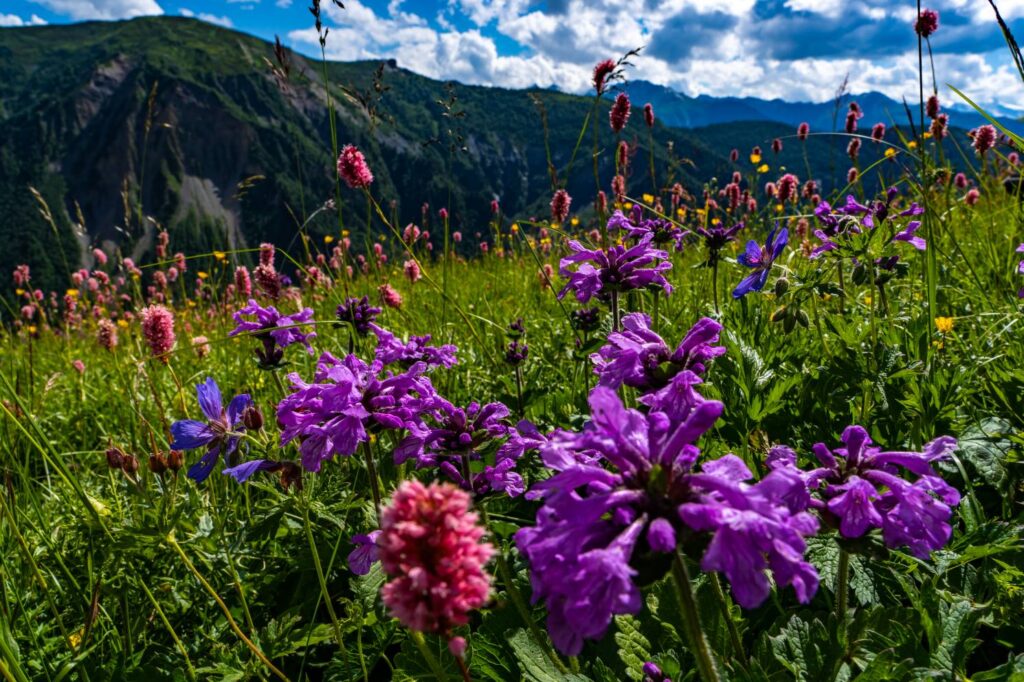
The Best Time to Go Hiking in the Caucasus
The high Caucasus stretch across Georgia’s northern regions and showcase breathtaking scenery from end to end. This is a hiker’s paradise that holds a ton of possibilities for adventurers!
In the mountains, you can expect lush, green scenery that sees a lot of rain, mosquitoes, and occasionally slippery trails. Windy conditions do occur but not too often, at least in the warmer months.
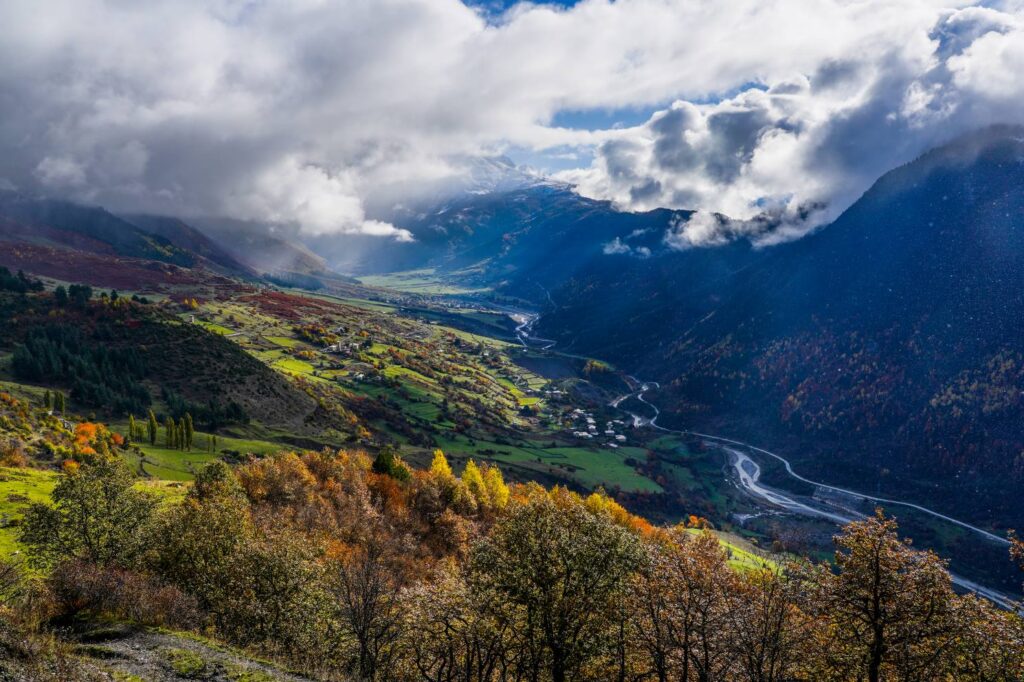
July – September are glorious times for hiking in the mountains. Temperatures are perfect when the sun is out, the trails are in good condition, and bad weather is infrequent. If you want maximum chances of experiencing the best of Georgia without meteorological interruption, this is the perfect time to go hiking.
If you plan to hike in the mountains during the shoulder seasons, be prepared for nasty trails. Muddy, unkempt paths are difficult to walk on, especially at an incline. You’ll need to be in good shape.
The south of the country tends to be quite dry which makes the trails easy to hike on, but it gets scorchingly hot in the summer months and wind gusts can get pretty intense on those wide-open, sweeping landscapes. For this part of the country, the shoulder seasons of spring and autumn are preferable.
Wrap Up: Best Time to Visit Georgia
Georgia has a lot to offer travelers throughout the year, and you should keep that in mind when you’re planning your trip! Each season gives a different experience; from the easy, warm treks of summer to the brisk, breathtaking landscapes of Autumn and winter.
This tiny country has a surprisingly diverse range of regions to explore with climates that rarely get too extreme. The temperature by month in Georgia has enough variance to give a unique experience at different times of the year while also not forcing you into a position where you need to prepare for a harsh climate.
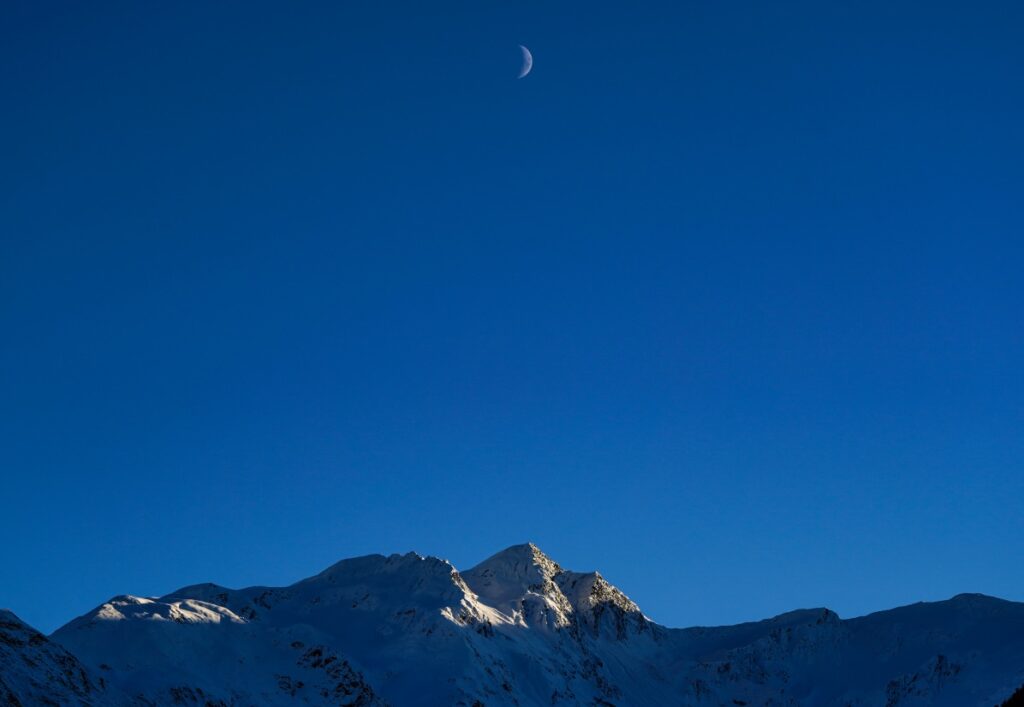
We chose the summer to visit Georgia because it offers the most stable climate. Sure, the streets will be a bit more packed but we’re heading to the mountains anyways. And besides, Georgia is still a hidden gem amongst the treasure trove that is Europe. It will still not be nearly as busy as the Alps or Pyrenees.
If you’re interested in hiking in the Svaneti with us, please don’t hesitate to reach out about our upcoming trips! Rain or shine, we climb! (And then maybe some wine.)

